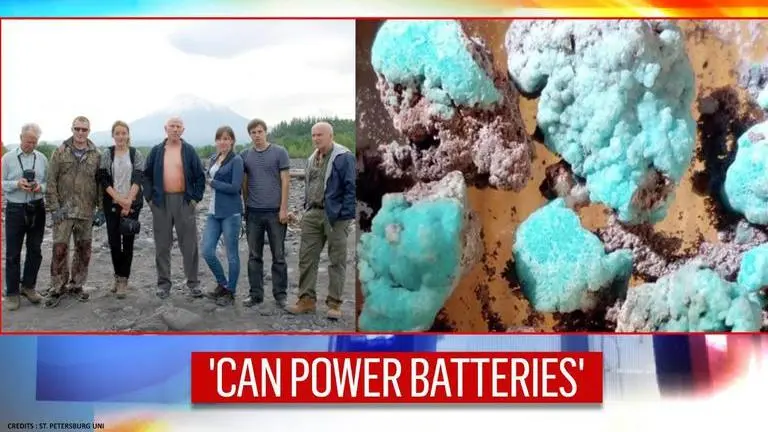Updated 18 November 2020 at 20:46 IST
Mineral Petrovit discovered by Russian scientists, can be used in rechargeable batteries
A team at the University of St. Petersburg, led by Stanislav Filatov, a specialist in crystals (crystallographer) dug out the mineral Petrovite in Kamchatka.
- Science News
- 3 min read

A research team in Russia has discovered a new crystal Petrovite that could fuel advances in next-generation batteries. A team at the University of St. Petersburg, led by Stanislav Filatov, a specialist in crystals (crystallographer) dug out petrovite, aka Na10CaCu2(SO4)8 which is a blue globular and gaseous mineral that can power the batteries that can be stored as a form of renewable source of energy. The newly discovered tabular crystals are composed of oxygen atoms, sodium-sulfur, and copper, that form a porous structure.
According to research published in the Mineralogical Magazine, the recent find by the scientists is a breakthrough as the mineral promises ionic conductivity that can be used as a cathode material for sodium-ion batteries. Scientists have conducted research for the petrovite for nearly 40 years. The mineral was observed by a research associate Svetlana Moskaleva at the Institute of Volcanology and Seismology of the Far Eastern Branch of the Russian Academy of Sciences. The mineral promised the scope for running futuristic alternative technology for energy storage systems. Furthermore, scientists termed the discovered mineral a “low cost’ sodium in the Earth’s crust that can take renewable energy to new heights with its peculiar molecular hallmark.
"At present, the biggest problem for this use is the small amount of a transition metal—copper—in the crystal structure of the mineral. It might be solved by synthesizing a compound with the same structure as petrovite in the laboratory," said researcher Filatov.
Advertisement
"This territory is unique in its mineralogical diversity. In recent years, researchers have discovered dozens of new minerals here, many of which are one-of-a-kind in the world," the university said in a statement.
[Lava flows of fumaroles in Kamchatka where the mineral was discovered. Credit: St. Ptersburg Uni.]
[The recent find of petrovite, Na10CaCu2(SO4)8 by the scientists from St Petersburg University. Credit: St. Petersburg Uni.]
Advertisement
Found at fumaroles in Kamchatka
"The copper atom in the crystal structure of petrovite has an unusual and very rare coordination of seven oxygen atoms," Filatov added. Further, he said that the coordination demonstrated by the bluish gobble is a characteristic of only a couple of compounds, and another compound called the saranchinaite, which was discovered by our colleagues from St Petersburg University—the research team of Professor Oleg Siidra. The mineral is the outcome of studying the mineralogy of scoria cones and lava flows of fumaroles in Kamchatka for several years. The samples were collected by the scientists during two major events, eruptions of Tolbachik Volcano—in 1975-1976 and one in 2012-2013.
(Image Credit: St. Petersburg Uni.)
Published By : Zaini Majeed
Published On: 18 November 2020 at 20:46 IST


